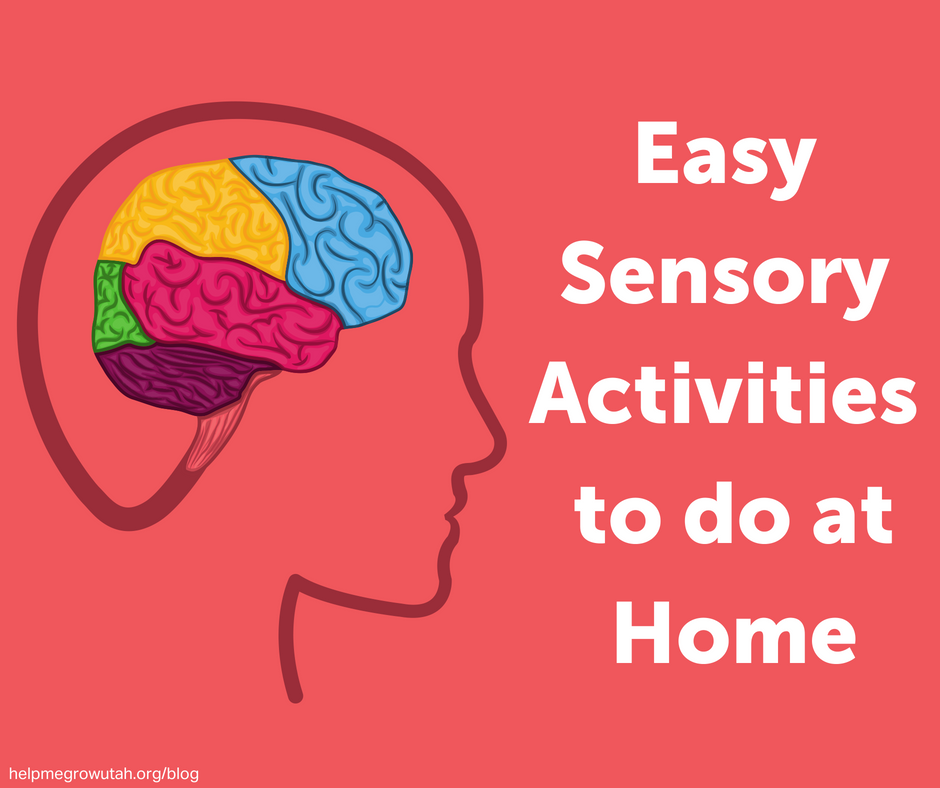As adults, we use each of our senses everyday to help understand and process the world around us. As children develop, they are learning how to use each of their senses too. Some children may struggle with sensory processing, either feeling overstimulated easily or having a hard time processing any sensory input at all. Whether or not your child struggles with sensory processing, doing sensory activities at home can be really fun and help any child developmentally! Here are some ideas of easy, at-home activities to engage your children’s senses.
Soft & Silky Playdough
My favorite recipe for homemade playdough is super easy, because it uses only 2 ingredients! Mix together 2½ cups of cornstarch and 1 cup of hair conditioner (the cheaper the better! Just make sure you and your kids like the scent.) Add more cornstarch as needed to get the consistency you’d like. When it comes together into a dough, it will be really soft and silky. You can add food coloring to color it however you’d like. I made this with kids when I was a nanny, and it was a huge hit!
Play dough is a great sensory activity because it helps your child explore new textures. Along with this soft and silky dough, you could give your child toys and tools of other textures to enhance their sensory processing. Play dough also helps with developing fine motor skills. Help your child learn to roll it into snakes, cut it into shapes, or draw letters and numbers in the dough. You could also hide small toys in the dough and have your child look for them.
Animal Action Dice
Other than the five senses we normally think of (sight, hearing, touch, taste, and smell), there are two other senses that children are developing. One is called proprioception, which involves processing information from muscles and joints to know how your body is positioned and how it moves without looking. The other is called the vestibular sense, which involves the inner ear to give us a sense of balance and coordinated movement. Adults don’t usually have to think about these senses, because they are so natural to us, but children are still developing these senses!
Any activities that involve movement will help engage your child’s proprioceptive and vestibular senses. A fun way to get your kids doing lots of different movements is to choose an animal and have them move like that animal would move. They can run fast like a cheetah, flap their arms like a butterfly, hop like a frog, or stretch tall like a giraffe. Click here for a fun printable template for a cube you can fold, and then your kids can roll the dice to decide what animal to move like.
Sensory/Discovery Bottles
Have you ever seen DIY projects for a bottle filled with glitter that your kids can shake up and watch the glitter settle? There are lots of variations of this project, and it’s a great way for kids to practice visual scanning and recognition. You could fill the bottle with small plastic animals or kitoys, letters, and other objects of different colors and shapes. As they float in the glitter, oil, or colored water in the bottle, have your child search for different things. Kids can take turns playing “I Spy” with these discovery bottles too. It can also be very calming to shake up the bottle and watch things slowly settle to the bottom again. This would be a great portable activity that you can bring with you away from home! Here is an article with ideas for different materials to use, and you could fill the bottle with anything you’d like.
Sound Hide & Seek
Find objects around your house that make noise (bell, whistle, toy drum, etc.) and use them in your game of hide-and-seek! Whoever is hiding takes the noise maker with them and makes noise while they’re hiding. The other players have to follow the sound to find whoever’s hiding. This is a great way to help your children learn how to listen for and follow sounds, and it will make a normal game of hide-and-seek a little more interesting!
For more sensory activity ideas, check out Help Me Grow’s Pinterest boards here!






